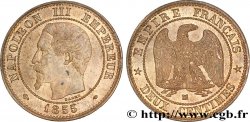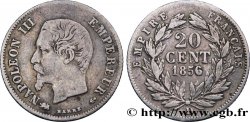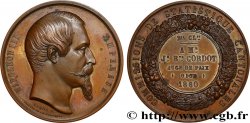fme_871620 - SECOND EMPIRE Médaille pour le graveur Jacques-Jean Barre
Not available.
Item sold on our e-shop (2025)
Price : 120.00 €
Item sold on our e-shop (2025)
Price : 120.00 €
Type : Médaille pour le graveur Jacques-Jean Barre
Date: n.d.
Metal : copper
Diameter : 59,5 mm
Orientation dies : 12 h.
Engraver BARRE Albert Désiré (1818-1878) / BARRE Jean-Auguste (1811-1896)
Weight : 117,54 g.
Edge : lisse + main CUIVRE
Puncheon : main indicatrice (1845-1860) et CUIVRE
Coments on the condition:
Belle patine marron hétérogène, présentant quelques points d’usure sur les hauts reliefs du portrait. Quelques rayures au revers
Obverse
Obverse legend : ANÉPIGRAPHE.
Obverse description : Tête nue de Jacques Jean BARRE en haut relief à droite dans un grènetis.
Reverse
Reverse legend : JACQUES JEAN / BARRE / GRAVEUR GÉNÉRAL / DES / MONNAIES / 3 AOUT 1793 / 10 JUIN 1855.
Reverse description : Légende en 7 lignes horizontales.
Commentary
Intéressante médaille en hommage au graveur Jacques-Jean Barre, réalisée par ses deux fils Auguste Barre et Désiré-Albert Barre.
Jacques-Jean Barre (né le 3 août 1793 à Paris et mort le 10 juin 1855 à Paris) est le 17e graveur général des monnaies à la Monnaie de Paris de 1842 à 1855. Il est le dessinateur et graveur des deux premières séries de timbres-poste de France, les types Cérès et à l'effigie de Napoléon III.
Son fils cadet, Désiré-Albert Barre (Paris 6 mai 1818-29 décembre 1878) lui succède à ce poste de Graveur général des monnaies. C'est à lui que l'on doit notamment la gravure des monnaies et des timbres du Second Empire à l'effigie de Napoléon III à tête laurée. Il est également le père de la médaille de Sainte-Hélène. Il rompt cependant avec Anatole Hulot en 1866.
Son fils ainé, Jean-Auguste Barre, sculpteur remarqué, et portraitiste attitré de la famille impériale, succède à son frère cadet en tant que Graveur général des monnaies en 1878 sous la IIIe République mais n'occupe cette fonction qu'une année..
Jacques-Jean Barre (né le 3 août 1793 à Paris et mort le 10 juin 1855 à Paris) est le 17e graveur général des monnaies à la Monnaie de Paris de 1842 à 1855. Il est le dessinateur et graveur des deux premières séries de timbres-poste de France, les types Cérès et à l'effigie de Napoléon III.
Son fils cadet, Désiré-Albert Barre (Paris 6 mai 1818-29 décembre 1878) lui succède à ce poste de Graveur général des monnaies. C'est à lui que l'on doit notamment la gravure des monnaies et des timbres du Second Empire à l'effigie de Napoléon III à tête laurée. Il est également le père de la médaille de Sainte-Hélène. Il rompt cependant avec Anatole Hulot en 1866.
Son fils ainé, Jean-Auguste Barre, sculpteur remarqué, et portraitiste attitré de la famille impériale, succède à son frère cadet en tant que Graveur général des monnaies en 1878 sous la IIIe République mais n'occupe cette fonction qu'une année..








 Report a mistake
Report a mistake Print the page
Print the page Share my selection
Share my selection Ask a question
Ask a question Consign / sell
Consign / sell
 Full data
Full data










